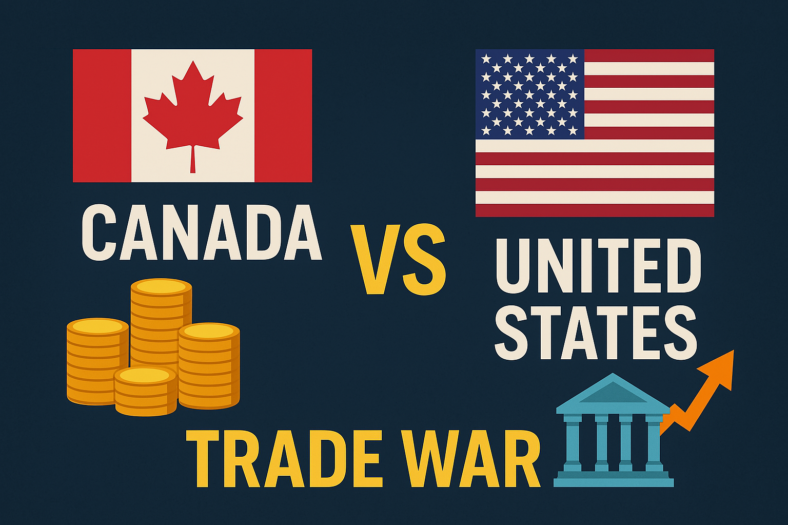In this comprehensive guide, we will delve into the intricacies of business lines of credit in Canada. We’ll explore how they work, the different types available, eligibility criteria, application processes, advantages, and potential drawbacks. Whether you’re a seasoned entrepreneur looking to expand your business or a newcomer navigating the world of business financing, understanding the nuances of a business line of credit can be instrumental in making informed financial decisions.
Throughout this guide, we’ll provide detailed insights, practical tips, and real-world examples to help you grasp the fundamentals of business lines of credit and leverage them effectively for the growth and success of your Canadian business. Let’s embark on this journey to demystify the world of business financing and empower you to make sound financial choices tailored to your business needs.
Best business line of credit – our top picks
What is a business line of credit and how do they work?
A business line of credit is a financial product that provides businesses with access to a revolving pool of funds, up to a predetermined credit limit. Unlike a traditional term loan where you receive a lump sum upfront and repay it over a fixed period with interest, a line of credit allows you to borrow funds on an as-needed basis, repay them, and then borrow again, similar to how a credit card works.
Here’s how a business line of credit typically works:
Application and Approval: To obtain a business line of credit, you’ll need to apply with a financial institution or lender. The application process usually involves providing information about your business’s financials, such as revenue, cash flow, credit history, and any collateral you may be able to offer. The lender will evaluate your application and determine your creditworthiness, including your ability to repay the borrowed funds.
Credit Limit: If approved, the lender will assign a credit limit, which represents the maximum amount of funds you can borrow under the line of credit. This limit is based on factors such as your business’s financial health, credit history, and collateral (if any).
Accessing Funds: Once your line of credit is established, you can access funds as needed, up to the approved credit limit. You can withdraw funds either through transfers to your business bank account, checks, online transfers, or using a designated credit card linked to the line of credit.
Repayment: As you use the funds, you’ll need to make regular payments to repay the borrowed amount, plus any accrued interest. Unlike term loans with fixed monthly payments, the repayment terms for a line of credit can vary. You may have the option to make interest-only payments, minimum payments, or pay off the entire balance at once.
Revolving Nature: One of the key features of a business line of credit is its revolving nature. As you repay the borrowed amount, the funds become available for you to borrow again. This flexibility allows you to manage your cash flow more effectively by accessing funds when needed without having to reapply for a new loan each time.
Interest Rates: The interest rates for a business line of credit can vary depending on factors such as your creditworthiness, prevailing market rates, and the lender’s policies. Some lines of credit may have variable interest rates tied to a benchmark rate, such as the prime rate, while others may offer fixed rates for a certain period.
Overall, a business line of credit provides businesses with a flexible and convenient source of financing to address short-term cash flow needs, cover unexpected expenses, seize growth opportunities, and manage fluctuations in revenue. By understanding how they work and using them responsibly, businesses can leverage lines of credit to support their financial objectives and sustain long-term success.
Pros and cons of business line of credit
Let’s delve into the advantages and disadvantages of utilizing a business line of credit:
Pros:
Flexibility: Business lines of credit offer flexibility in terms of borrowing and repayment. You can access funds as needed, up to your approved credit limit, and repay them at your own pace, making it a versatile financial tool for managing cash flow fluctuations and unexpected expenses.
Cost-Effective: Compared to traditional term loans, where you pay interest on the entire loan amount, lines of credit typically charge interest only on the amount you borrow. This can make them more cost-effective, especially if you don’t need to use the full credit limit consistently.
Quick Access to Funds: Once approved, you can access funds from your line of credit promptly, often within a few business days. This quick access to capital can be crucial for seizing time-sensitive opportunities or addressing urgent financial needs.
Builds Credit History: Responsible use of a business line of credit can help establish and build your business’s credit history. Timely repayments and prudent financial management can enhance your creditworthiness, making it easier to qualify for larger loans or better terms in the future.
No Collateral Required: While some lines of credit may require collateral for larger credit limits or more favorable terms, many business lines of credit are unsecured, meaning you don’t need to pledge assets as security. This reduces the risk to your business assets.
Cons:
Variable Interest Rates: Many business lines of credit feature variable interest rates, which can fluctuate with market conditions or changes in the lender’s policies. While this can result in lower initial rates, it also introduces the risk of higher borrowing costs if interest rates rise.
Potential for Overborrowing: The revolving nature of a business line of credit can tempt businesses to overborrow, leading to excessive debt accumulation and financial strain. Without careful monitoring and disciplined repayment strategies, businesses may find themselves trapped in a cycle of debt.
Risk of Credit Limit Reduction: Lenders retain the right to reassess your creditworthiness and adjust your credit limit accordingly. Factors such as changes in your business’s financial health, credit utilization, or economic conditions may prompt lenders to reduce your credit limit, limiting your access to funds.
Fees and Charges: While lines of credit generally have lower fees compared to term loans, they may still entail origination fees, annual fees, or transaction fees. These additional charges can increase the overall cost of borrowing and should be considered when evaluating the affordability of a line of credit.
Complexity in Repayment: Unlike term loans with fixed repayment schedules, lines of credit often offer more flexible repayment options. While this flexibility can be advantageous, it can also lead to complexity in managing repayments, particularly if you’re juggling multiple draws and varying interest rates.
By carefully weighing these pros and cons and considering your business’s specific financial needs and circumstances, you can determine whether a business line of credit is the right financing solution for your enterprise.
What types business line of credit are available in Canada
In Canada, businesses have access to various types of lines of credit tailored to their specific needs and circumstances. Here are some common types of business lines of credit available:
Traditional Business Line of Credit: This is the most common type of line of credit offered by banks and financial institutions in Canada. It provides businesses with a revolving credit facility that they can draw on as needed, up to a predetermined credit limit. Funds can be used for various purposes, such as working capital, inventory purchases, or covering short-term expenses.
Secured Line of Credit: Secured lines of credit require businesses to pledge collateral, such as real estate, equipment, or accounts receivable, to secure the credit facility. By offering collateral, businesses may qualify for larger credit limits or lower interest rates. However, defaulting on the line of credit could result in the seizure of the pledged assets by the lender.
Unsecured Line of Credit: Unlike secured lines of credit, unsecured lines of credit do not require businesses to provide collateral. Instead, approval is based primarily on the business’s creditworthiness, financial stability, and repayment capacity. Unsecured lines of credit may have higher interest rates and lower credit limits compared to secured lines of credit.
Business Credit Cards: Business credit cards function as a form of revolving credit, allowing businesses to make purchases and access funds up to a predetermined credit limit. While technically not a traditional line of credit, business credit cards offer similar flexibility in borrowing and repayment. They often come with additional perks such as rewards programs, expense tracking tools, and purchase protection benefits.
Invoice Financing Line of Credit: Also known as accounts receivable financing, this type of line of credit allows businesses to borrow against outstanding invoices to improve cash flow. Lenders advance a percentage of the invoice value upfront, typically 70% to 90%, and the remaining balance (minus fees) is released when the customer pays the invoice. Invoice financing lines of credit are particularly beneficial for businesses with long payment cycles or seasonal fluctuations in revenue.
Asset-Based Line of Credit: Asset-based lines of credit are secured by a business’s assets, such as inventory, equipment, or accounts receivable. Lenders assess the value of these assets and extend a line of credit based on a percentage of their appraised worth. Asset-based lines of credit are suitable for businesses with valuable assets but may have stricter eligibility requirements and higher interest rates.
Government-Supported Lines of Credit: In Canada, various government programs and initiatives offer lines of credit to support small and medium-sized businesses. These programs may provide favorable terms, lower interest rates, or additional guarantees to encourage lending to eligible businesses. Examples include the Canada Small Business Financing Program (CSBFP) and regional economic development agencies’ funding programs.
Each type of business line of credit has its own advantages, eligibility criteria, and considerations. Businesses should carefully assess their financing needs, risk tolerance, and repayment capacity when selecting the most suitable type of line of credit for their operations. Consulting with financial advisors or lenders can also provide valuable guidance in choosing the right financing solution.
How to find the best business line of credit in Canada
Finding the best business line of credit in Canada requires careful research, comparison, and evaluation of various factors. Here’s a step-by-step guide to help you identify and secure the most suitable line of credit for your business:
Assess Your Business Needs: Start by evaluating your business’s financial situation, funding requirements, and specific needs. Determine why you need a line of credit, how much capital you require, and how you plan to use the funds. Understanding your financial goals and constraints will help you narrow down your options and focus on lines of credit that align with your objectives.
Research Lenders: Explore the different lenders offering business lines of credit in Canada. This includes traditional banks, credit unions, online lenders, and alternative financing providers. Research their offerings, reputation, interest rates, fees, eligibility criteria, and customer reviews. Pay attention to lenders who specialize in serving businesses in your industry or size category.
Compare Terms and Features: Once you’ve identified potential lenders, compare the terms and features of their business lines of credit. Look at factors such as the credit limit, interest rates (both variable and fixed), repayment terms, fees (e.g., annual fees, origination fees, transaction fees), and any additional benefits or perks offered, such as rewards programs or flexible repayment options.
Evaluate Eligibility Requirements: Understand the eligibility criteria set by each lender for their business lines of credit. This may include factors such as your business’s creditworthiness, revenue, cash flow, time in operation, industry risk, and collateral requirements. Be realistic about your chances of meeting these criteria and focus on lenders whose requirements align with your business profile.
Check Application Process and Timeline: Review the application process and timeline for obtaining a business line of credit from each lender. Some lenders may offer streamlined online applications with quick approval decisions, while others may require more documentation and a longer processing time. Consider your urgency and convenience in accessing funds when choosing a lender.
Seek Recommendations and Referrals: Reach out to fellow business owners, industry peers, or financial advisors for recommendations and referrals. They can provide valuable insights based on their own experiences with different lenders and help you identify reputable lenders that are known for offering competitive business lines of credit.
Negotiate Terms: Don’t hesitate to negotiate terms with potential lenders to secure the best possible deal for your business. This may involve negotiating interest rates, fees, credit limits, or repayment terms to better suit your needs and financial situation. Lenders may be willing to offer concessions, especially if you have a strong credit profile or can demonstrate your business’s growth potential.
Review and Compare Offers: Once you’ve gathered offers from multiple lenders, carefully review and compare them side by side. Pay attention to the total cost of borrowing, including interest rates and fees, as well as any terms and conditions that may impact your borrowing experience. Choose the offer that offers the most favorable terms and aligns with your business goals.
Read the Fine Print: Before finalizing any agreement, thoroughly review the terms and conditions of the business line of credit, including any contract clauses, repayment obligations, penalties for late payments or early repayment, and conditions for credit limit adjustments. Make sure you fully understand the terms and are comfortable with the commitments before signing.
Seek Professional Advice: If you’re unsure about certain aspects of the business line of credit or need assistance navigating the process, consider seeking advice from financial advisors, accountants, or legal professionals specializing in business finance. They can provide expert guidance and help you make informed decisions that are in the best interest of your business.
By following these steps and conducting thorough due diligence, you can identify and secure the best business line of credit in Canada that meets your financing needs, offers favorable terms, and supports your business’s growth and success.
How to apply for a business line of credit in Canada
Applying for a business line of credit in Canada involves several steps to ensure a smooth and successful application process. Here’s a comprehensive guide on how to apply:
Prepare Your Business Documentation: Gather all necessary documentation required by lenders to assess your eligibility for a business line of credit. This typically includes:
- Business registration documents (e.g., articles of incorporation, partnership agreement)
- Business financial statements (income statement, balance sheet, cash flow statement)
- Business tax returns for the past few years
- Proof of ownership or management structure
- Business plan or executive summary outlining your business’s goals, operations, and financial projections
- Personal identification documents (e.g., driver’s license, passport) for business owners or key stakeholders
Check Your Credit Score: Lenders will evaluate your personal and/or business credit history as part of the application process. Obtain a copy of your credit report from major credit bureaus (e.g., Equifax, TransUnion) and review it for any errors or discrepancies. Aim for a strong credit score to increase your chances of approval and secure favorable terms.
Research Lenders: Research banks, credit unions, online lenders, and alternative financing providers offering business lines of credit in Canada. Compare their offerings, interest rates, fees, eligibility criteria, and customer reviews to identify potential lenders that best suit your needs and preferences.
Contact Lenders for Prequalification: Reach out to selected lenders to inquire about their business line of credit products and prequalification requirements. Provide basic information about your business, financials, and funding needs to determine whether you meet the lender’s initial eligibility criteria and if they offer products suitable for your business.
Complete the Application Form: Once you’ve identified a suitable lender, complete the business line of credit application form provided by the lender. Provide accurate and detailed information about your business, including its legal structure, industry, revenue, expenses, assets, liabilities, and any existing debts or credit facilities.
Submit Required Documentation: Attach the necessary documentation to support your business line of credit application. This may include business registration documents, financial statements, tax returns, personal identification, and any additional information requested by the lender. Ensure all documents are current, accurate, and organized for easy review.
Undergo Credit Assessment: The lender will conduct a thorough credit assessment to evaluate your creditworthiness and assess the risk of extending a line of credit to your business. This may involve reviewing your credit history, financial statements, cash flow projections, industry risk factors, and any collateral offered to secure the credit facility.
Wait for Approval Decision: Once you’ve submitted your application and supporting documents, wait for the lender to review and assess your application. The approval process timeline can vary depending on the lender, complexity of the application, and volume of applications being processed. Some lenders may provide instant decisions, while others may take several days or weeks to review your application.
Review and Accept Terms: If your application is approved, carefully review the terms and conditions of the business line of credit offered by the lender. Pay attention to interest rates, credit limits, repayment terms, fees, and any other contractual obligations. Ensure you fully understand the terms before accepting the offer.
Sign the Agreement: Once you’re satisfied with the terms, sign the business line of credit agreement provided by the lender. This legally binds you to the terms and conditions outlined in the agreement, including repayment obligations, interest rates, and any penalties for non-compliance.
Access Funds: Upon signing the agreement, the lender will activate your business line of credit, and you’ll gain access to the approved credit limit. You can withdraw funds as needed, up to the approved limit, through various channels provided by the lender, such as online banking, checks, or debit cards.
Manage Repayments: Once you start using the line of credit, make timely repayments according to the agreed-upon terms to maintain a positive credit history and avoid penalties or fees. Monitor your account regularly to track your borrowing activity, outstanding balances, and available credit.
By following these steps and providing thorough documentation, you can streamline the business line of credit application process and increase your chances of approval. It’s essential to be transparent, proactive, and responsive throughout the application process to demonstrate your creditworthiness and financial responsibility to the lender.
Common fees and costs for business line of credit
When applying for a business line of credit in Canada, it’s crucial to understand the various fees and costs associated with this type of financing. Here are some common fees and costs you may encounter:
Interest Rate: Interest is the primary cost of borrowing on a business line of credit. Lenders typically charge interest on the outstanding balance of funds you borrow from the line of credit. Interest rates can be fixed or variable, and they may vary based on factors such as your creditworthiness, prevailing market rates, and the lender’s policies. Be sure to understand how interest is calculated and whether the rate is subject to change over time.
Annual Fee: Some lenders may charge an annual fee for maintaining a business line of credit, regardless of whether you use the funds. This fee is usually charged on an annual basis and may vary depending on the credit limit and terms of the line of credit. Annual fees can add to the overall cost of borrowing and should be considered when comparing different lines of credit.
Origination Fee: An origination fee, also known as an application or setup fee, is charged by some lenders when you initially establish a business line of credit. This fee covers the administrative costs associated with processing your application and setting up the credit facility. Origination fees are typically a percentage of the approved credit limit and may be rolled into the total amount borrowed or paid upfront.
Transaction Fees: Transaction fees are charges incurred for specific activities related to the use of the business line of credit. Common transaction fees include:
- Draw Fees: Charged each time you access funds from the line of credit, either through transfers, checks, or debit card transactions.
- Transfer Fees: Applied when you transfer funds from your line of credit to an external account, such as your business bank account.
- Overdraft Fees: Levied if you exceed your approved credit limit or fail to maintain sufficient funds in your account to cover outstanding payments.
- Cash Advance Fees: Applicable when you withdraw cash from your line of credit using a credit card linked to the account.
Non-Usage Fee: Some lenders may impose a non-usage or maintenance fee if you do not use the business line of credit for a certain period. This fee is intended to cover the costs of maintaining the credit facility and may be charged monthly or annually.
Prepayment Penalty: If you choose to pay off your business line of credit before the agreed-upon term, you may incur a prepayment penalty or fee. This penalty compensates the lender for the interest income lost due to early repayment and varies depending on the terms of the line of credit.
Renewal Fee: At the end of the term or upon maturity of the business line of credit, some lenders may charge a renewal fee to extend the credit facility for another term. This fee covers the administrative costs associated with renewing the line of credit and may be negotiable depending on your relationship with the lender.
Late Payment Fees: If you fail to make timely payments on your business line of credit, you may incur late payment fees or penalties. These fees are typically assessed as a percentage of the overdue amount and can add up quickly if left unpaid.
When comparing business lines of credit from different lenders, it’s essential to consider not only the interest rate but also the various fees and costs associated with each option. Understanding the full cost of borrowing will help you make informed decisions and choose the most cost-effective financing solution for your business. Be sure to review the terms and conditions of the line of credit agreement carefully and ask your lender about any fees or charges you don’t fully understand.
Business line of credit vs regular line of credit
Let’s compare the two:
Business Line of Credit:
Intended Use: A business line of credit is designed specifically for business purposes, such as managing cash flow, purchasing inventory, covering operating expenses, or seizing growth opportunities.
Eligibility: To qualify for a business line of credit, you typically need to have an established business entity, such as a corporation or LLC, and meet certain financial criteria based on your business’s revenue, creditworthiness, and time in operation.
Credit Limit: The credit limit for a business line of credit is determined based on your business’s financials, credit history, and other factors. This limit represents the maximum amount you can borrow from the line of credit.
Interest Rates: Interest rates on business lines of credit may vary depending on factors such as the lender, your creditworthiness, prevailing market rates, and the terms of the credit agreement. Rates may be lower compared to personal lines of credit due to the perceived lower risk associated with business borrowing.
Purpose: Businesses typically use lines of credit to manage short-term cash flow needs, fund working capital requirements, take advantage of growth opportunities, or address unexpected expenses. The funds borrowed are usually reinvested into the business to generate revenue or enhance operations.
Regular Line of Credit (Personal Line of Credit or Consumer Line of Credit):
Intended Use: A regular line of credit, also known as a personal line of credit or consumer line of credit, is intended for personal use. Individuals can use it to cover personal expenses, finance purchases, consolidate debt, or handle emergencies.
Eligibility: To qualify for a personal line of credit, individuals typically need to have a good credit score, stable income, and a history of responsible financial behavior. Lenders may also consider factors such as employment status and debt-to-income ratio.
Credit Limit: The credit limit for a personal line of credit is based on the individual’s creditworthiness and financial profile. Lenders assess factors such as credit score, income, and existing debt obligations to determine the maximum amount that can be borrowed.
Interest Rates: Interest rates on personal lines of credit may vary depending on factors such as the lender, the individual’s credit score, prevailing market rates, and the terms of the credit agreement. Rates may be higher compared to business lines of credit due to the perceived higher risk associated with personal borrowing.
Purpose: Personal lines of credit are commonly used for various personal expenses, such as home improvements, education expenses, medical bills, or unexpected emergencies. The funds borrowed are typically used to meet individual needs rather than business-related expenses.
In summary, while both business lines of credit and regular lines of credit provide access to revolving funds, they serve different purposes and are tailored to different borrowing needs. Businesses utilize business lines of credit to manage business-related expenses and operations, while individuals use personal lines of credit for personal expenses and financial needs.
Alternatives to business line of credit
Several alternatives to a business line of credit are available for businesses seeking flexible financing solutions. Here are some common alternatives to consider:
Term Loans: Term loans provide businesses with a lump sum of capital upfront, which is repaid over a fixed term with regular installments. Unlike lines of credit, which offer revolving credit, term loans have a defined repayment schedule and typically feature fixed or variable interest rates. Term loans are suitable for financing large investments, equipment purchases, expansion projects, or long-term growth initiatives.
Invoice Financing: Also known as accounts receivable financing, invoice financing allows businesses to borrow against their outstanding invoices to improve cash flow. Lenders advance a percentage of the invoice value upfront, typically 70% to 90%, and the remaining balance (minus fees) is released when the customer pays the invoice. Invoice financing is ideal for businesses with slow-paying customers or seasonal fluctuations in revenue.
Merchant Cash Advances (MCAs): Merchant cash advances provide businesses with a lump sum of capital upfront in exchange for a percentage of future credit card sales. Repayment is made through a predetermined percentage of daily or weekly credit card transactions. While MCAs offer quick access to funds, they often come with higher fees and costs compared to traditional loans.
Equipment Financing: Equipment financing allows businesses to purchase or lease equipment and machinery needed for operations. Lenders provide funds to acquire the equipment, and the equipment itself serves as collateral for the loan. This type of financing is ideal for businesses looking to acquire or upgrade equipment without tying up working capital.
Business Credit Cards: Business credit cards function as a revolving line of credit, allowing businesses to make purchases and access funds up to a predetermined credit limit. While technically not a loan, business credit cards offer flexibility in borrowing and repayment and often come with rewards programs, expense tracking tools, and other benefits.
Small Business Administration (SBA) Loans: SBA loans are government-backed loans designed to support small businesses with financing needs. The U.S. Small Business Administration guarantees a portion of the loan, reducing the lender’s risk and enabling businesses to qualify for more favorable terms, such as lower interest rates and longer repayment periods. SBA loans are available for various purposes, including working capital, equipment purchases, real estate acquisition, and debt refinancing.
Crowdfunding: Crowdfunding platforms allow businesses to raise funds from a large number of individuals or investors through online campaigns. Businesses can offer rewards, equity, debt, or revenue-sharing arrangements in exchange for contributions. Crowdfunding is suitable for startups, innovative projects, or businesses with a compelling story or value proposition.
Grants and Government Programs: Various grants, subsidies, and government programs are available to support businesses in specific industries, regions, or sectors. These programs provide non-repayable funding, low-interest loans, or other forms of financial assistance to help businesses start, grow, or innovate.
When evaluating alternatives to a business line of credit, consider factors such as your financing needs, repayment capacity, cost of borrowing, eligibility criteria, and the specific purpose of the funds. Each financing option has its own advantages and considerations, so it’s essential to assess which option aligns best with your business objectives and financial circumstances. Consulting with financial advisors or lenders can provide valuable guidance in selecting the most suitable financing solution for your business.
Can you get a business line of credit with bad credit?
While it’s generally more challenging to qualify for a business line of credit with bad credit, it’s not impossible. Lenders may be more hesitant to extend credit to businesses with poor credit histories due to the increased risk of default. However, several options may still be available:
Secured Lines of Credit: If you have valuable assets, such as real estate, equipment, or accounts receivable, you may be able to secure a business line of credit by offering collateral. Securing the credit facility with assets reduces the lender’s risk, making it more likely for them to approve the line of credit, even with bad credit.
Alternative Lenders: Some alternative lenders specialize in providing financing to businesses with less-than-perfect credit histories. These lenders may be more willing to overlook past credit issues and consider other factors, such as your business’s revenue, cash flow, industry, and growth potential, when evaluating your application.
Personal Guarantee: You may be asked to provide a personal guarantee to secure a business line of credit, especially if your business’s creditworthiness is limited. A personal guarantee means that you, as the business owner, are personally liable for repaying the debt if the business defaults. Offering a personal guarantee can help mitigate the lender’s risk and increase your chances of approval.
Co-Signer: If you have a business partner, investor, or trusted individual with strong credit, you may consider asking them to co-sign the credit application. A co-signer with good credit can strengthen your application and provide assurance to the lender, increasing the likelihood of approval for the business line of credit.
Credit Repair: If time allows, you can work on improving your credit score before applying for a business line of credit. This may involve paying off outstanding debts, disputing errors on your credit report, and establishing a history of responsible financial behavior. Improving your credit score can increase your chances of qualifying for better financing terms in the future.
While these options may increase your chances of obtaining a business line of credit with bad credit, it’s essential to carefully consider the terms and conditions of any offer and ensure that the financing aligns with your business’s needs and financial capacity. Additionally, be prepared to demonstrate your business’s ability to repay the credit facility and provide any requested documentation or information to support your application.
FAQs about the best business line of credit in Canada
A business line of credit is a revolving credit facility that provides businesses with access to funds up to a predetermined credit limit. Businesses can borrow and repay funds as needed, with interest charged only on the amount borrowed. It offers flexibility for managing cash flow, covering short-term expenses, and seizing growth opportunities.
Qualification criteria for a business line of credit in Canada typically include factors such as your business’s revenue, credit history, time in operation, cash flow, and collateral (if any). Lenders may also consider your industry, business plan, and financial projections. Meeting these criteria increases your chances of approval.
Benefits of a business line of credit include flexibility in borrowing and repayment, quick access to funds, cost-effectiveness compared to other financing options, and the ability to improve cash flow and seize opportunities. It also helps build your business’s credit history and provides a financial safety net for unexpected expenses.
Interest rates for a business line of credit in Canada may vary depending on factors such as the lender, your creditworthiness, prevailing market rates, and the terms of the credit agreement. Rates may be fixed or variable and can range from competitive to higher rates depending on your risk profile.
Yes, there may be fees associated with a business line of credit, including annual fees, origination fees, transaction fees, non-usage fees, and prepayment penalties. It’s essential to review the terms and conditions of the credit agreement carefully to understand the fees and costs involved.
The amount you can borrow with a business line of credit depends on factors such as your business’s financials, creditworthiness, and the lender’s policies. Credit limits can range from a few thousand dollars to several hundred thousand dollars or more, depending on your business’s needs and qualifications.
To apply for a business line of credit in Canada, you’ll typically need to submit an application form along with supporting documentation, such as business financial statements, tax returns, and identification documents. The lender will evaluate your application, creditworthiness, and eligibility criteria before approving the line of credit.
The approval timeline for a business line of credit in Canada varies depending on factors such as the lender, the complexity of your application, and the volume of applications being processed. Some lenders may offer instant decisions, while others may take several days or weeks to review your application.
While business lines of credit offer flexibility in how you use the funds, it’s essential to use them for business-related purposes, such as managing cash flow, funding operations, purchasing inventory, or investing in growth initiatives. Misusing the funds or using them for personal expenses can have consequences and may violate the terms of the credit agreement.
Choosing the best business line of credit involves evaluating factors such as interest rates, fees, credit limits, repayment terms, eligibility criteria, and the lender’s reputation. It’s essential to compare multiple offers, consider your business’s financial needs and objectives, and choose a line of credit that aligns with your requirements and budget.
In conclusion, business lines of credit offer valuable flexibility and financial support for businesses in Canada, allowing them to manage cash flow fluctuations, cover short-term expenses, and seize growth opportunities. With easy access to revolving credit up to a predetermined limit, businesses can borrow funds as needed and repay them at their own pace, with interest charged only on the amount borrowed.
While business lines of credit provide numerous benefits, including quick access to funds, cost-effectiveness, and the ability to build credit history, it’s essential for businesses to carefully consider factors such as interest rates, fees, eligibility criteria, and repayment terms when selecting the best option for their needs.
By understanding how business lines of credit work and exploring the various financing alternatives available in Canada, businesses can make informed decisions to support their financial objectives and drive success in today’s dynamic business landscape. Whether it’s managing day-to-day operations, pursuing growth initiatives, or navigating unforeseen challenges, a well-utilized business line of credit can be a valuable tool for businesses of all sizes and industries across Canada.




















